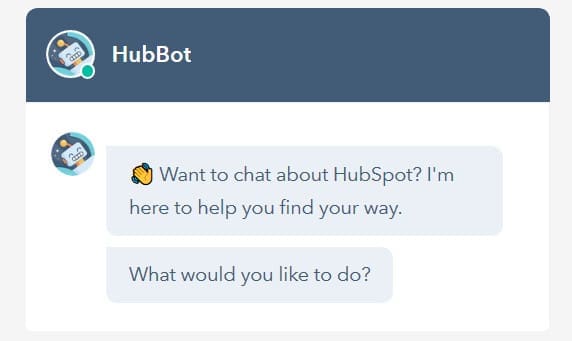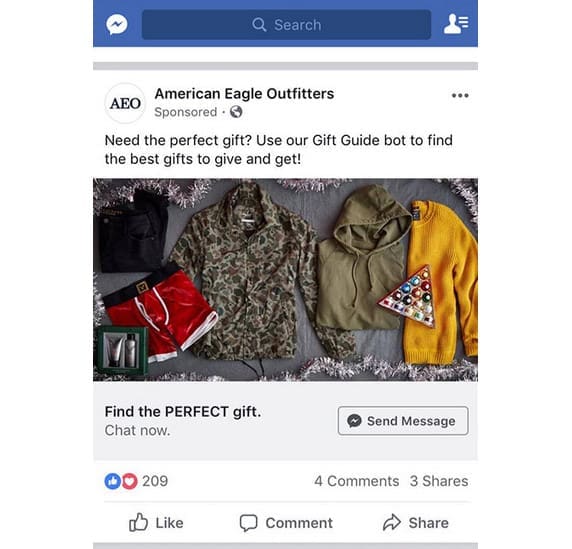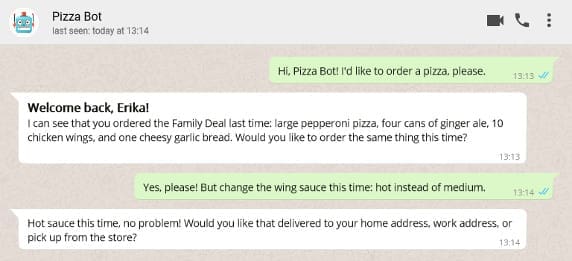
Navigate an unpredictable landscape with actionable, data-driven strategies tailored for your business from the brand down to the local level.

Chatbots are disrupting the digital experience, fundamentally changing the way businesses interact with their audiences online. Although originally pioneered for use on ecommerce platforms, this digital technology is fast becoming a popular customer-engagement tool in a wide variety of industries—especially as the pandemic drives consumers online.
As their use becomes commonplace, it’s time to dispel some common-yet-understandable myths about chatbots and determine if they could be the conversion-driving digital tool your business has been looking for.
Chatbots have become a hot commodity as they steadily expand their capabilities to fulfill a number of business and public-facing roles. This year, we’re already seeing bots become part of the new normal and transform digital experiences by:
With the multitude of chatbot varietals available, it’s crucial to understand which solutions will amplify your efforts—and complement your online experience—as you develop and refine your digital strategy. To do that, we have to first debunk some troublesome chatbot misconceptions.
Let’s start with one of the biggest misconceptions out there: robots will make us all redundant. This is nothing new. In fact, humanity’s ever-looming fear of machines taking over the world has been incubating since the dawn of the Industrial Age.

In reality, chatbots are proving to be a convenience rather than an existential threat. Primarily, they surface queries in real time in order to quickly identify issues and potentially solve them without human involvement. An IBM study demonstrated that chatbots can answer 80% of standard questions, which may not sound particularly impressive on its own—but think about how much time that frees up for employees to focus on more complex issues and situations.
When people hear “chatbots”, they often assume that artificial intelligence is powering this type of technology due to its “intelligent” nature and automatic responses. While there is some truth to this, bots come in all different shapes and sizes with a wide range of capabilities. For most B2B and B2C applications, there are three main types of chatbot you may be able to deploy: script-driven, keyword recognition, and contextual.
One of the most commonly found bots in the market to date, script-driven chatbots are driven by decision-tree structures, mapping out interactions that require user selections to progress towards a specific answer. They commonly use menu or button-style interactions in order to follow a set of hierarchies and curated responses.

Script-driven bots are ideal for basic FAQ-type queries that users can access very quickly.
Subscribe to our monthly newsletter.
Blending AI capabilities and user experience (UX) fundamentals, these bots use statistical models to mirror human-like conversation and speech patterns. Customizable keywords and AI identify appropriate answers to users’ queries, creating a noticeable step up from script-driven bots as users engage in conversational exchanges.

Keyword recognition bots are great for product-based queries on messenger-style platforms.
The most advanced of the current generation of chatbots, contextual bots use machine learning (ML) and AI to improve response quality over time. These smart bots can store past conversations to better understand each user’s speech patterns—and remember contextual information such as payment details and order preferences—to enhance and personalize the next interaction that takes place.

Contextual bots are well-suited to businesses that have repeat purchase patterns.
Chatbots come in all shapes and sizes, and can usually be fairly extensively customized to enhance your business’s automated capabilities. Most chatbots exist primarily in B2C environments: it’s estimated that 85% of online interactions between customers and businesses will be chatbot-intermediated in 2020. With technology paving the way for AI and ML capabilities, solutions for user support, customer service, information management, and even payment alternatives will become increasingly bot-supported as well.
As always, technological advancements are continuing at a rapid rate. For that reason alone, it’s important to remember that chatbots currently provide supportive tech to personalize customer experiences, but are not the be-all and end-all for interacting with your audiences online.
Could you deploy bots to enhance your customer relationships? Could you save significant time for your teams to address complex challenges rather than get bogged down by everyday troubleshooting? And how do you deploy a bot, anyway?
These are ideal questions for our bot-savvy technologists, strategists, and designers, who are always ready to help develop smarter digital strategies. Drop us a line today!
Navigate an unpredictable landscape with actionable, data-driven strategies tailored for your business from the brand down to the local level.
Navigate an unpredictable landscape with actionable, data-driven strategies tailored for your business from the brand down to the local level.
Navigate an unpredictable landscape with actionable, data-driven strategies tailored for your business from the brand down to the local level.
Subscribe to our monthly newsletter.